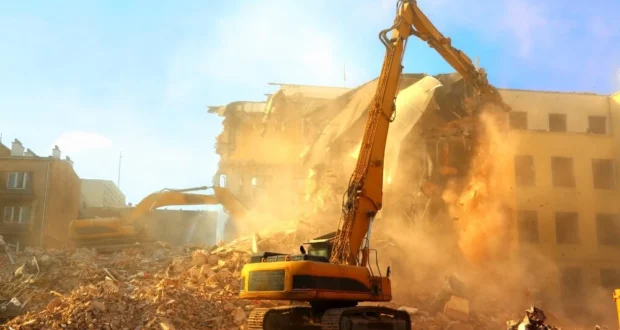Responsible approaches in demolition by professionals are vital to ensure that structures that have reached the end of their life can be safely removed and cleared. This includes ensuring that all the materials from a structure are saved or recycled to keep as much of it out of landfills as possible.
Identifying the Issue
Whether a building needs to be demolished depends on the level of risk. Some structures may be unsafe due to natural disasters (earthquakes, floods, fires), structural damage, or neglect over time. Large-scale demolitions, as part of an intelligent decline strategy, are sometimes needed to make room for new green spaces and other public facilities.
For larger demolition projects, it’s vital to find a contractor with experience in responsible approaches to demolition. A reliable contractor will follow strict protocols to ensure occupant safety and that the work is carried out safely. This will include ensuring the location of live services has been checked and disconnected, dealing with environmental hazards and disposal, and providing proper safety equipment and communication systems.
Planning for the Future
The demolition process can be time-consuming and costly, especially when it’s a large-scale project. This is why it’s essential to plan as much as possible. This will allow you to complete the job in a timely and cost-effectively. It can also help you reduce the environmental impact by minimizing the waste generated.
A vital part of the planning process involves determining how your demolition materials will be used. You can do this by examining what can be reused or recycled, as well as identifying any potential markets for these materials. In addition, it’s essential to select a demolition Boston, MA service that has extensive experience and expertise in handling various types of projects.
Demolition can be an effective solution in the case of structurally unsound buildings. Still, many localities are pursuing it to address blight or make room for new development. However, this approach can be problematic for the community and may harm local property values.
Reducing the Impact on the Environment
In a society that produces more and more waste from consumerism, it is essential to minimize the amount of material that ends up in landfills. This is the principle behind the deconstruction movement, which involves identifying materials that can be reused in future construction projects or recycled into a new product.
There are also ways to reduce environmental impacts during home demolition, including using wetting agents to prevent dust particles from becoming airborne and using low-noise equipment in residential areas. This helps to ensure that residents can continue their daily activities without being disrupted by loud noises.
Demolition can also help to reduce soil erosion by minimizing the number of holes that are dug during excavation. It can also be used to make way for green spaces and other community facilities, which can help to improve the quality of life in urban areas. In addition, large-scale demolitions can help to save costs by reducing the need for maintenance, utilities, and other services in vacant buildings.
Keeping the Community Safe
The complexities of the demolition process require careful planning, specialized equipment, and qualified professionals. Many communities face the challenge of removing blighted structures and clearing the way for new development. This work is dangerous and can be fatal without the proper training, personal protective gear, and compliance with OSHA standards.
Before demolishing a structure, it must be surveyed to determine its condition and any potential risks for workers. It may be necessary to disconnect or relocate gas, water, or electrical services before the demolition begins. Engineers may also use explosives to bring the building down in a controlled manner.
Localities can set objectives for their local demolition strategy, establishing standard procedures and legal mechanisms to carry out demolitions effectively. They can also pursue various cost-recovery strategies, including placing liens on tax-delinquent properties and acquiring and holding vacant property in their land banks. They can also make funding available for demolitions by leveraging support from financial/lending institutions, private philanthropy, and anchor institutions with a stake in community well-being.
 Blog For Noob Random thought of a Noob Blogger
Blog For Noob Random thought of a Noob Blogger









